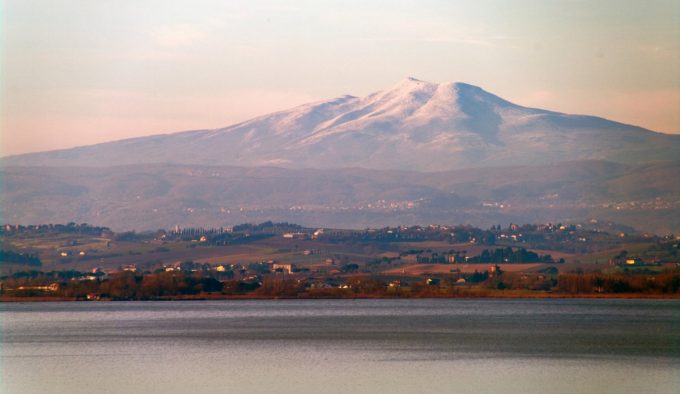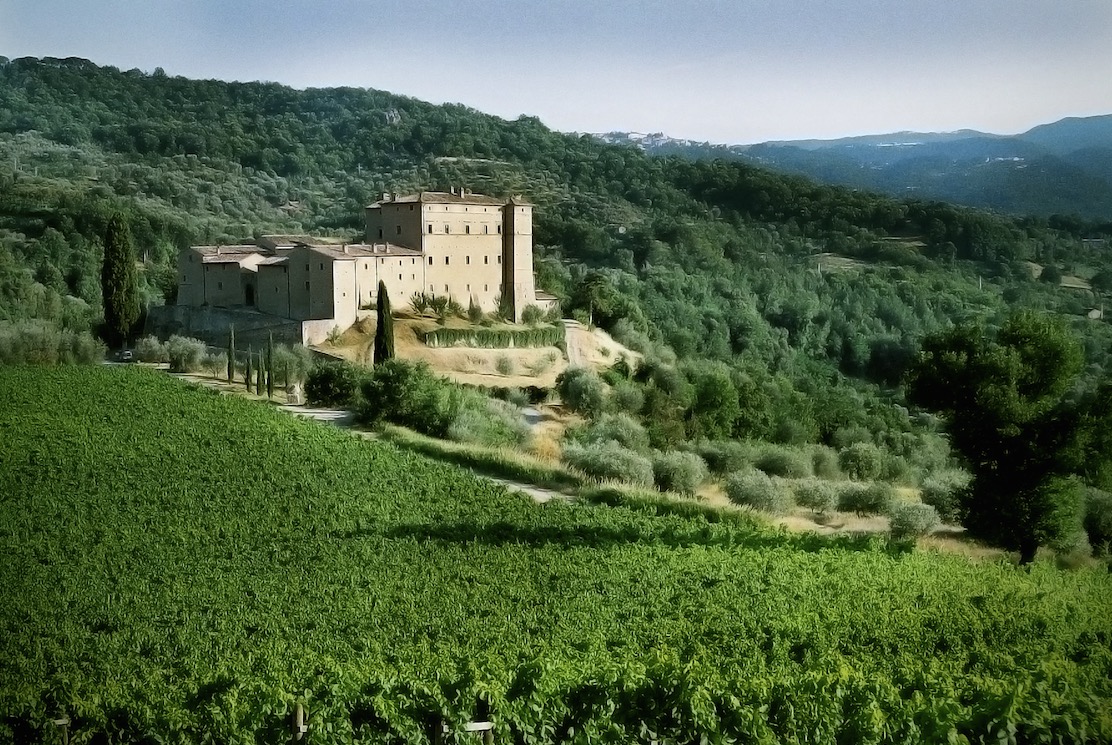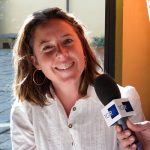Ever heard of Fufluns? Until recently I hadn’t either, but he’s quite the legend. The Etruscan god of happiness, wine, health and growth, he was the early Tuscan version of the Ancient Greek Dionysus (though less terrifying) and later would be absorbed by the Romans for their representation of Liber, or Bacchus.
Fufluns showed up in my life via a second-century BCE life-sized bronze model of a sheep’s liver that is on display at the Palazzo Farnese in Piacenza’s Municipal Museum. The organ is thought to represent the Etruscan view of the Sun, the Moon and the Earth, and on it are marked the 16 heavenly bodies, of which Fufluns is named as one. The model liver, a reference guide for learner soothsayers, depicts a celestial map to help trainees read the entrails of a sacrificed sheep and understand the desires of the gods. The physical home of those deities, the Etruscans’ Mount Olympus, was in southern Tuscany, a couple of hours drive south of Florence, on Monte Amiata. Italy’s second highest volcano after Etna, it is dormant, not having erupted in over 180,000 years.

Monte Amiata
The volcano may not be up to much these days thankfully, but the Etruscans were hyperactive on this mountain. Evidence of their wine industry can be found alongside the rivers running from the top of Amiata out towards the Tyrrhenian Sea. Around 20 wine basins dated to the Etruscan period have been uncovered in this area. The hollows were split into two vats with a hole carved into the dividing wall.
On one side the freshly picked grapes would be dropped, ready to be crushed by foot. Through the hole the juice would flow, ready to ferment into wine and be transported downstream. In ancient times, this area was clearly a hotspot for grape growing and winemaking.
If you’re looking for a wine from Amiata to see what the Etruscans recognised as divine territory, then you will need to find the bottles labelled “Montecucco”. This is a relatively recent denomination, having granted quality seal statuses DOC in 1998 and DOCG in 2011. From its peak, along its folds and slopes span seven communes whose wineries are allowed to label their wines as Montecucco, so long as they follow the appellation rules for production. If they choose not to do so (and some excellent estates have opted out), then you won’t see the DOC/G seal and the back label may require a little more attention to understand the place of origin.
The majority of Montecucco production is red wine made predominantly from the Tuscan noble variety Sangiovese, known as Brunello in neighbouring Montalcino. Many producers are working in a similar way to their peers in Montalcino, using the same clone of Sangiovese, and fermenting and ageing in large oak barrels for long periods. The price point is where the wines differ, with Montecucco wines costing a fraction of the price of those from Montalcino.
Perhaps it is the ridiculously reasonable price tag that make touring Montecucco’s wineries such a pleasure—the possibilty of returning home laden with great value booty—but it’s probably more to do with the welcome one receives. Generous and warm, there’s no sense of intimidation or obligation for wine tourists, rather a genuine pleasure in sharing these underrated, unknown wines. Wonderful for the weary wino, many producers have small restaurants, and even accommodation attached.
The styles of Montecucco wines vary, which is unsurprising considering how varied the geology is. Clay soils dominate in the northern part of the region, further inland, drawing comparisons with the robust Brunellos from the southern side of Montalcino. In the western reaches you are a mere half an hour from the coast and the wines seem to extoll the blessings of a sea breeze: the reds of Leonardo and Marco Salustri in Poggi del Sasso show Sangiovese at its most lithe and Pinot Noir-esque.
Perfumed and fine, I wished to write my tasting notes with a fountain pen, or better a quill dipped in ink. The fluidity and grace of the wines clashed with my heavy-handed, biro-inscribed letters.

Castello di Potentino, a magical place in the Monte Amiata area of Tuscany
Lesser-known native Tuscan red grape variety Ciliegiolo, usually seen in a supporting role to Sangiovese in the Chianti region, is also given the spotlight by some producers, appearing in purezza here in Montecucco. It is a grape capable of making a bright, super fruity yet refined wine, or as wine expert Ian d’Agata writes, “It will remind you of a sour red cherry fruit cocktail with alcohol.” I suppose experimentation is easier here in a new denomination, where expectations do not restrict play. At Castello di Potentino in Seggiano, Charlotte Horton produces wines outside of the DOC, applying methods and grape varieties not typical of Tuscany. The single varietal wines made from Grenache and Pinot Noir nevertheless exquisitely express the unique terroir of Montecucco.
The salty marine wind that breezes in from the coast during the day to be hushed back by cool mountain breezes at night are also beneficial to the white wines of Montecucco. Vermentino is the Italian white grape of the moment, particularly for international sales. It is gathering quite a fan base for its versatility (and for not being Sauvignon Blanc): it can do light and fresh, or structured and serious. Aromas and flavours range from floral to fruity to herbal but always finishing with a saline tang. Look out for wines around the communes of Paganico, Cinigiano and Poggi del Sasso.
If we were to sacrifice a sheep and divine its liver now, we might find that the future will be different for Montecucco. The reds will beckon higher prices and the white Vermentinos higher praise. Venture to the mountain now before those wine tourists in Montalcino and Montepulciano get wind of Fufluns’ generosity to mystical Montecucco.








